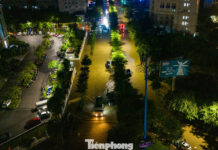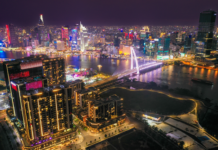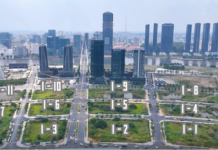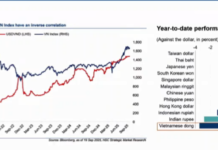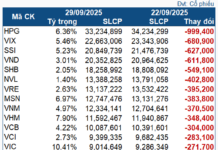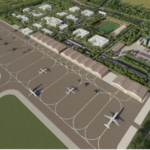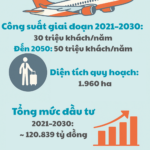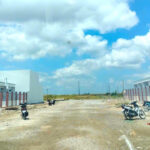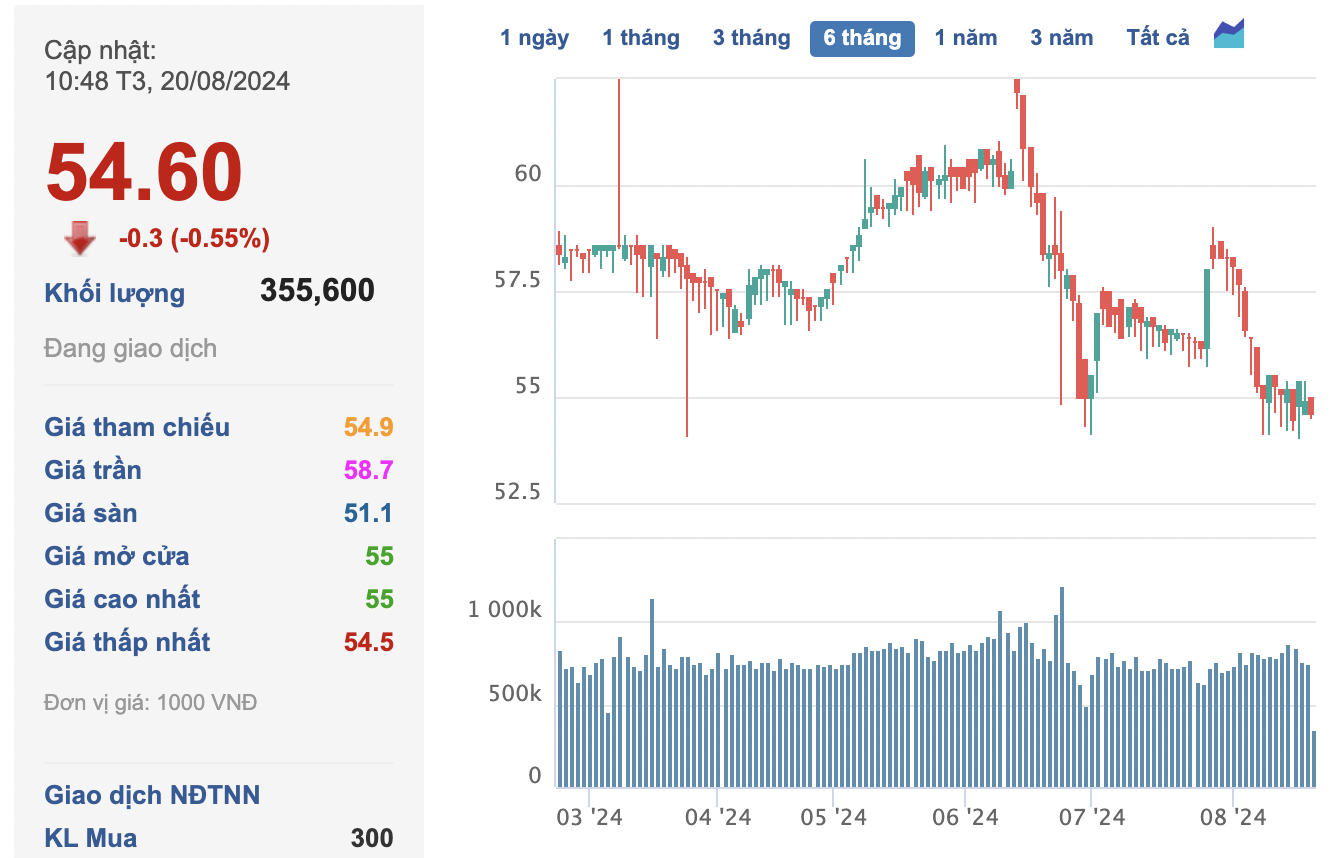Vietnam Exhibition Center, located in Dong Anh, Hanoi, stands out with its massive 24,000-ton steel dome, a modern architectural highlight and a testament to the advanced construction technology used.
The project, with a total investment of over VND 7,000 billion, was initiated on August 30, 2024, by Vietnam Exhibition Fair Center JSC (VEFAC), a subsidiary of Vingroup. The steel dome, the largest in the world, was constructed by Dai Dung Corporation. According to their representative, over 1,000 workers and engineers worked around the clock in three shifts, maximizing resources, materials, and super-heavy equipment, including cranes with a capacity of up to 500 tons.
This colossal dome features a space truss design with radial ribs mimicking a turtle shell. It is made of ASTM-standard steel, capable of withstanding Typhoon 12 winds and an earthquake of magnitude 8. Notably, over 100,000 high-strength steel bolts and screws were installed with an allowable deviation of less than 3mm, along with 3D laser scanning technology to control deformation and ensure absolute accuracy.
Upon completion, the dome not only meets stringent requirements but also sets a record: the largest steel dome structure in the world, entirely made with Vietnamese steel. Such steel dome structures demand intricate construction techniques, superior load-bearing capacity, and bold design vision.
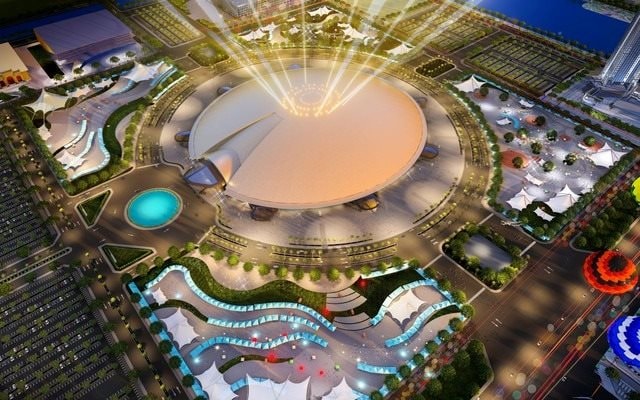
Globally, numerous steel domes on a grand scale have emerged, from stadiums and exhibition centers to national landmarks, showcasing the impressive creativity and prowess of the construction industry.
Sports Stadiums
AT&T Stadium, located in Arlington, Texas, is the home of the renowned Dallas Cowboys NFL team. With a desire to build the “best stadium in the world,” owner Jerry Jones collaborated with HKS, Inc. (designer), Manhattan Construction Company (general contractor), and leading steel contractors. The stadium was completed in 2009 with a total investment of approximately $1.15 – $1.3 billion, with the city of Arlington contributing $325 million through bond issuance and the Cowboys covering the rest.
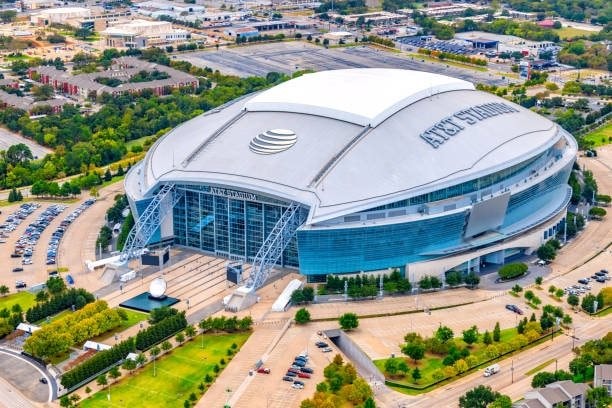
The stadium’s highlight is its massive steel dome, featuring a pair of box girders spanning 1,225 ft (~373 m) in length, making them the longest in the world. The dome has a retractable design, with two translucent membranes measuring 78 m × 125 m that can be opened or closed in just 12 minutes. Combined with the 36 m × 55 m end-zone glass doors that open in 18 minutes, the stadium offers a flexible and airy space. It has a standard capacity of 80,000 seats, expandable to over 100,000 for special events.
Crasus Dome Oita (formerly Oita Bank Dome), also known as Big Eye, is located in Oita City on Kyushu Island, Japan. Owned by Oita Prefecture and operated by Resonac Holdings Co., Ltd., the stadium was constructed from 1998 and officially opened in May 2001, with a total cost of approximately ¥25 billion. One of its distinctive features is its retractable steel dome, with a diameter of about 245-274 m. The dome consists of a steel frame covered with a semi-translucent membrane and can be opened or closed in 20 minutes using a cable-pull system.
The Singapore National Stadium, located in Kallang, is the centerpiece of the 35-hectare Singapore Sports Hub complex. Owned by Sport Singapore and operated by Dragages Singapore Pte. Ltd., the stadium has a total investment cost of approximately SGD 1.87 billion (about USD 1.33 billion). It boasts the world’s largest free-spanning dome, measuring 310 meters wide and 83 meters tall. The dome covers an area of about 75,500 square meters, and its retractable portion, spanning about 20,000 square meters, can be operated in 20 minutes. It also features the world’s largest LED screen and LED lighting strips around the dome’s frame. The lightweight steel structure has a density of only 100-120 kg/m², resulting in a total steel weight of about 8,000 tons, significantly reducing material and weight compared to international standards.
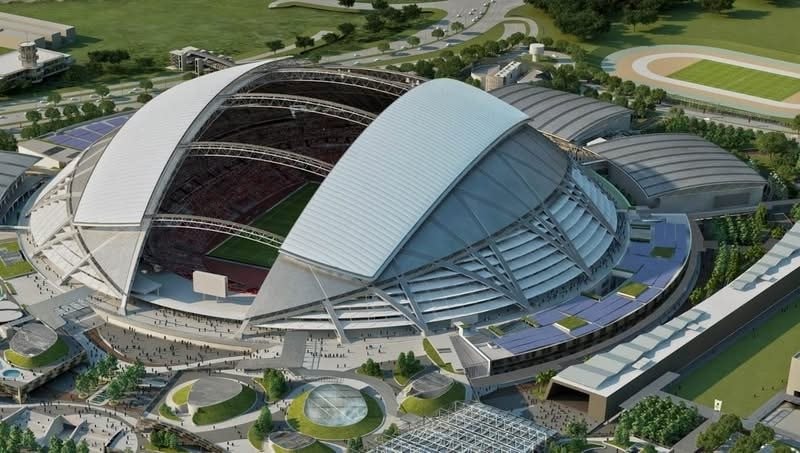
The Astrodome in Houston, Texas, inaugurated in 1965, is recognized as the world’s first domed stadium. With a diameter of 216 meters and a height of 63 meters, it features a steel space frame dome covered with semi-translucent Lucite to allow natural light. The stadium was owned by Harris County Domed Stadium Corporation and constructed by Hoffman Construction Company. For decades, it served as the home of the Houston Astros baseball team and the Houston Oilers football team.
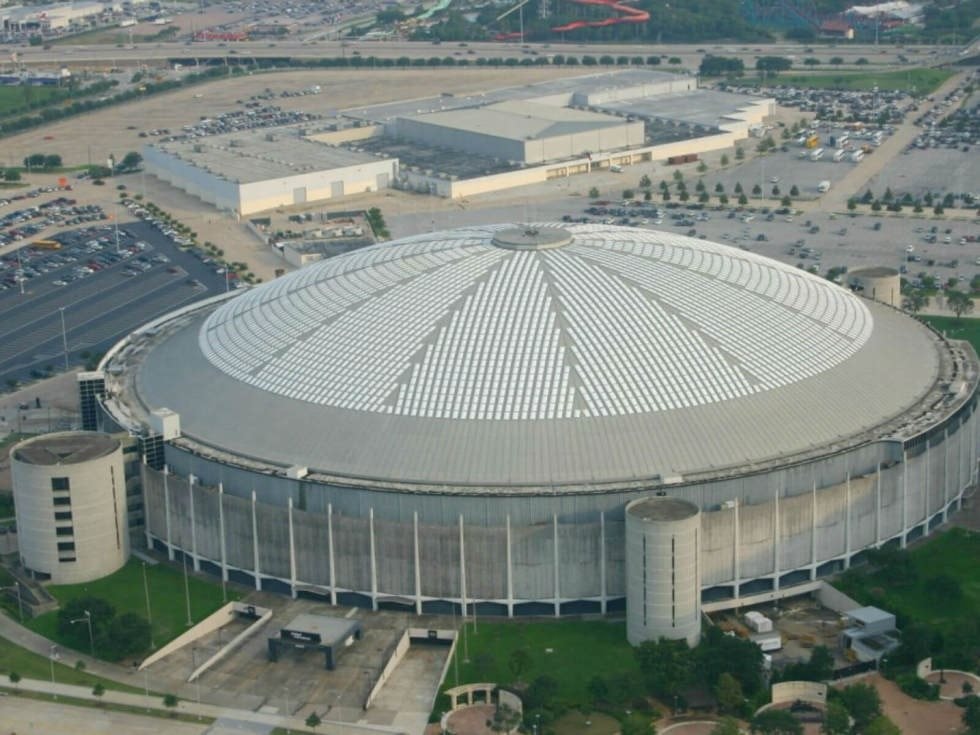
Exhibition & Convention Centers
The Millennium Dome in Greenwich, London, once the icon of the Millennium Exhibition, is now known as The O₂ Arena. Its roof features a cable-net structure with a diameter of 365 meters (representing each day of the year). The entire surface is covered with PTFE fabric and supported by 12 steel pillars, symbolizing the 12 months or 12 hours on a clock. The roof is so light that it weighs less than the air contained within it.
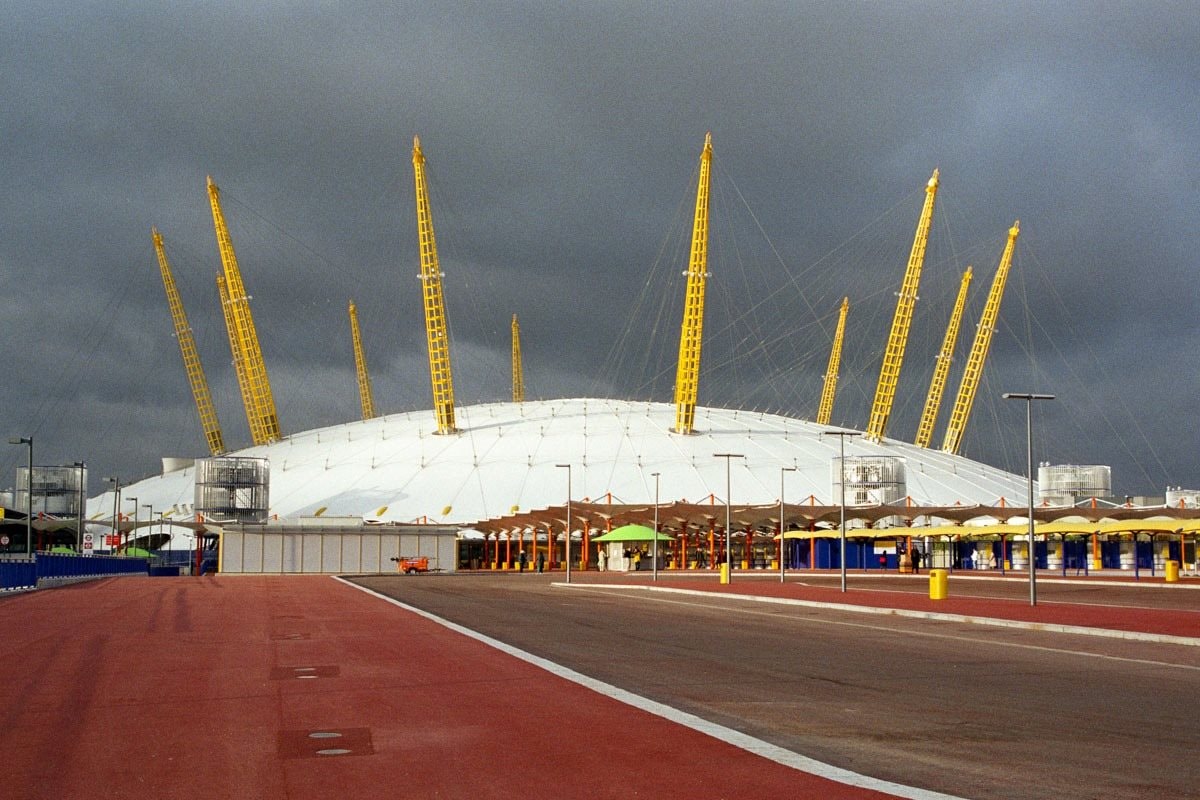
Messe Frankfurt in Germany is one of Europe’s largest exhibition centers, owned by the city of Frankfurt (60%) and the state of Hesse (40%). It offers 372,073 square meters of indoor exhibition space and an additional 66,764 square meters outdoors, with 11 exhibition halls and approximately 2,200 staff members supporting around 310 events annually.
Some notable exhibition halls and areas feature oval or cable-net roofs, such as the North Entrance with a roof measuring 42 m x 18 m. The design creates a “floating” effect with its delicate pyramid-shaped columns. It maximizes daylighting while optimizing aesthetics and functionality, becoming an architectural landmark within the exhibition complex.
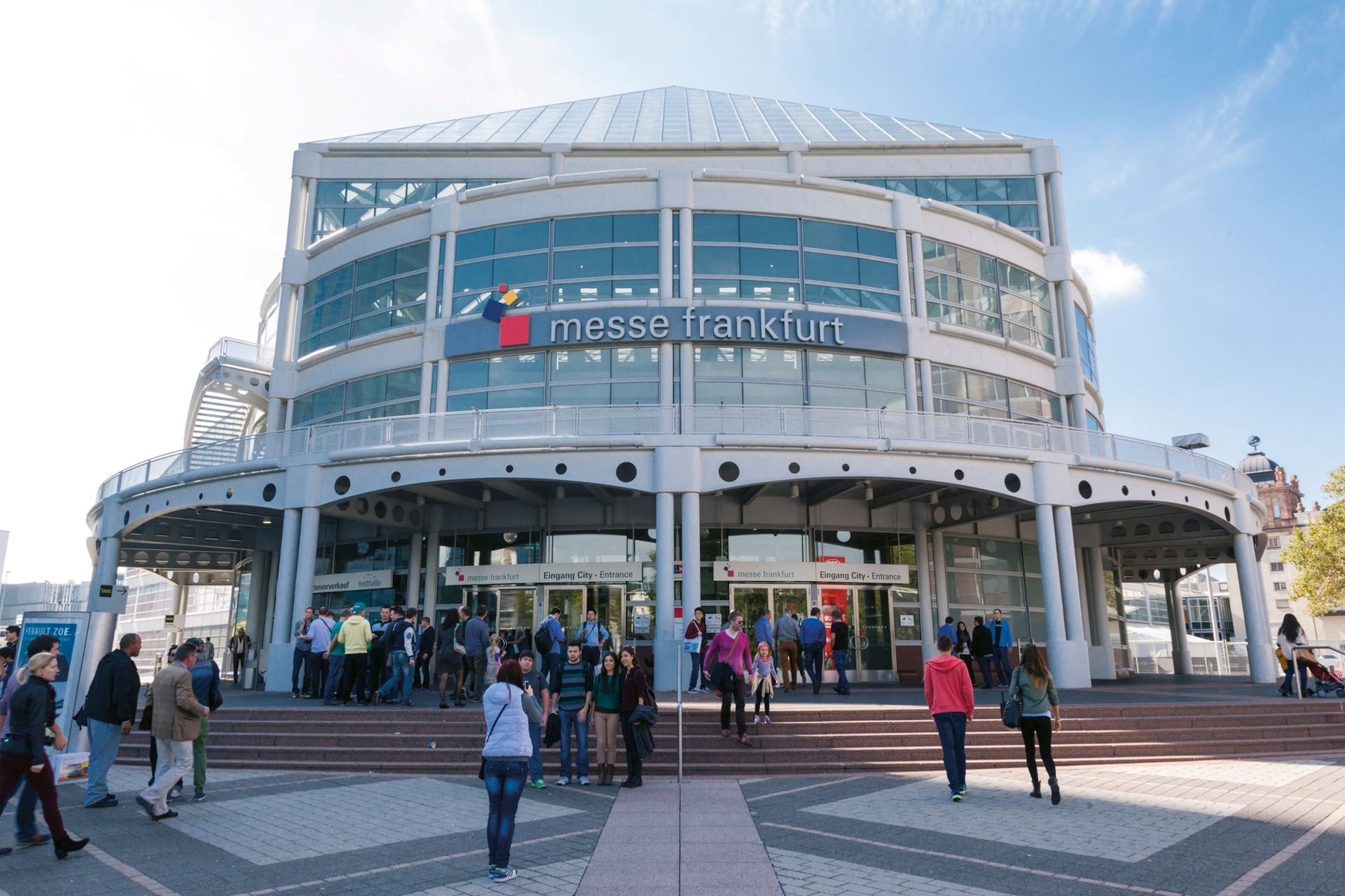
The National Exhibition and Convention Center (NECC) in Shanghai, China, spans a total area of 1,470,000 square meters, including 500,000 square meters of exhibition space. Initiated by the Chinese Ministry of Commerce in collaboration with the Shanghai Municipal Government, it was inaugurated in 2015. The center is characterized by its prominent steel structure, particularly in the massive roof design, which resembles four petals radiating from the center.
The main exhibition hall measures 297 m × 350 m, creating an expansive interior space. The roof is designed as a large-span space truss system with tension rods on the cantilevered parts to reduce wind loads. Rubber bearings are integrated to mitigate stresses caused by temperature differences in the massive steel structure.
Commercial & Entertainment Centers
The Khan Shatyr Entertainment Center in Nur-Sultan, Kazakhstan, is a unique commercial and entertainment complex designed as a giant tent, standing at approximately 150 meters tall. Its cone-shaped steel dome structure is comprised of a steel frame and a transparent ETFE membrane supported by steel cables. This design not only creates an iconic shape but also covers an area of about 140,000 square meters, shielding the interior from harsh external weather conditions while maintaining a comfortable environment year-round.
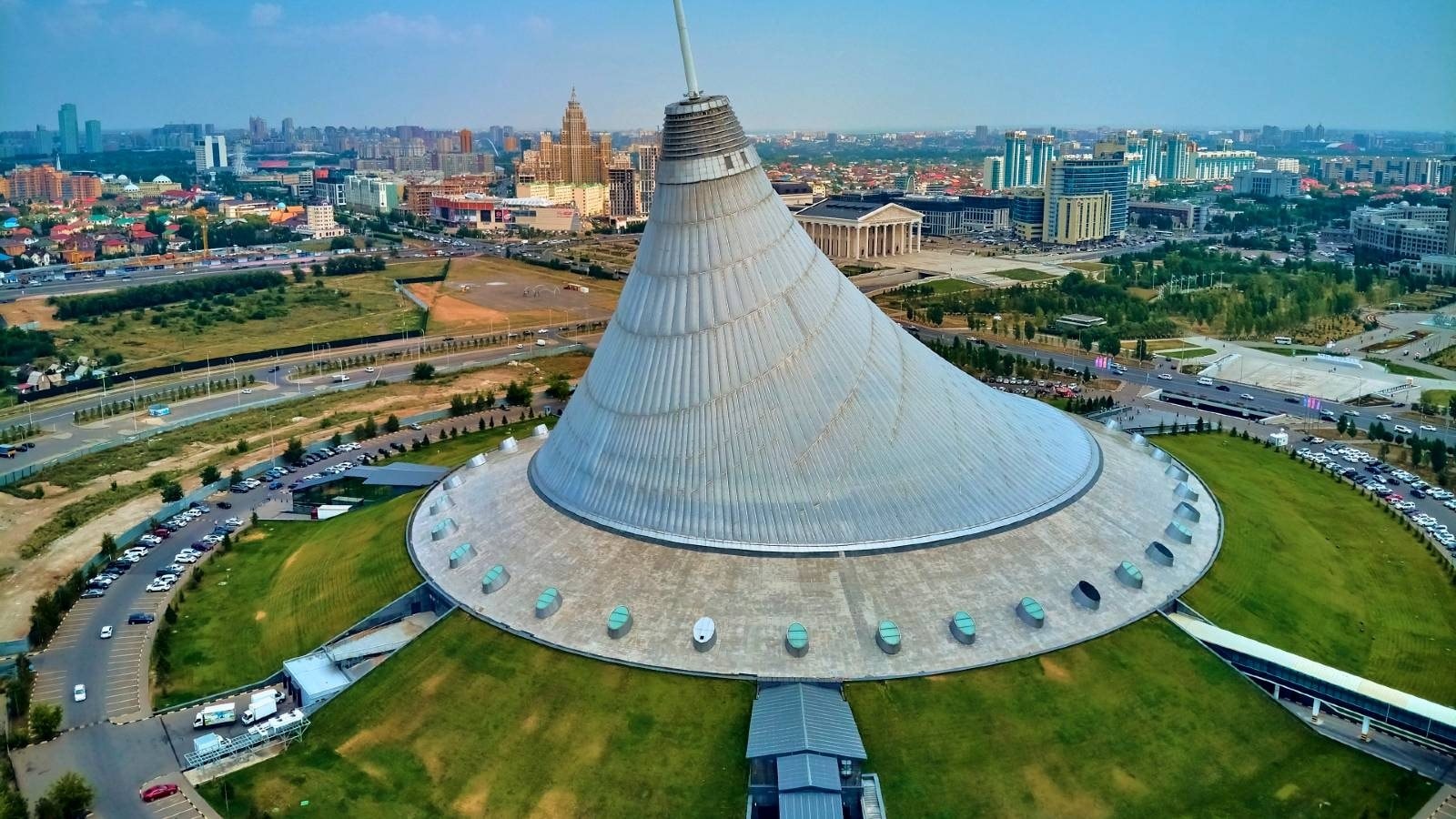
Galleria Vittorio Emanuele II in Milan, Italy, is one of the world’s first and most renowned shopping arcades, constructed from 1865 to 1877. Its distinctive design forms a cross, with walkways covered by intricate steel and glass domes – a cutting-edge technique at the time. The highlight is the central dome, rising to about 47 meters with a diameter of 36 meters, complemented by glass domes running along the corridors, flooding the space with natural light and creating an airy ambiance.
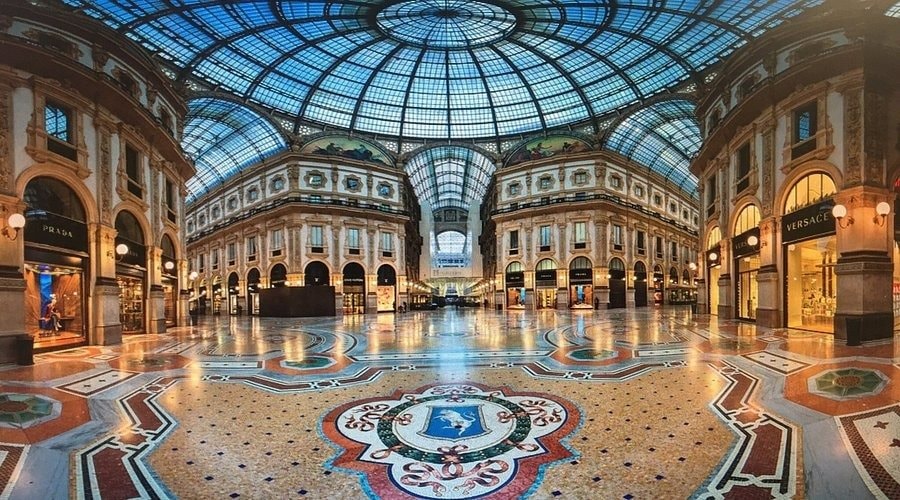
The steel framework ensures durability and has made the structure an architectural symbol, seamlessly blending technology and art from the 19th century.
The Great Relocation: 1,590 Households Make Way for Vietnam’s High-Speed Rail Future
The Quang Ngai province plans to allocate 2,510 resettlement land lots to 1,590 households who will be relocated to make way for the high-speed rail project passing through the area.
Providing Housing Solutions: An Additional 1,000 Social Homes Available, Now Catering to Commuters Traveling Up to 20km
The An Xuyen Ward Social Housing Project in Ca Mau Province is an impressive undertaking, featuring six 12-story blocks comprising nearly 1,000 social housing units. With a total investment of over VND 1,215 billion, this project is set to be completed within 36 months. One unique aspect of this project is Ca Mau’s inclusive eligibility criteria, which allows individuals with existing homes who work more than 20 kilometers away to also purchase these social housing units.



